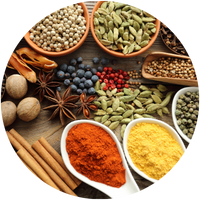
Intermittent Fasting
Intermittent fasting (IF) is an eating pattern that alternates between periods of fasting and eating. It helps the body burn excess fat by using stored energy. IF does not specify which foods you eat but rather when you should eat them.
How does it work?
When we eat, the body produces insulin to convert carbohydrates into glucose for energy or store it as glycogen in the liver and muscles. Once glycogen storage is full, excess glucose is turned into fat. During fasting, insulin levels drop, prompting the body to use liver glycogen first, then fat for energy once glycogen is used up.
BE AWARE!
If you use insulin or sulphonylurea tablets (like gliclazide) you may be at risk of a low sugar event (hypo) during periods of fasting. You should speak to your healthcare team about how to safely adjust your medication for fasting periods.
Intermittent fasting plans

5:2 method
With this method, you consume only 500–600 kcals on two nonconsecutive days of the week but eat as usual, following healthy eating guidelines, the other 5 days.

16:8 method
This involves a 16-hour fasting period and a 8-hour eating period where you follow healthy eating guidelines.

Fasting days:
Planning is essential to get the most out of your calorie limit. Base foods around:
Fluids
Drink about 3 litres of fluids, including water, no-sugar squash, tea, and coffee, to help reduce side effects.
Protein
Choose low-calorie, lean proteins like chicken, turkey, fish, beans, and pulses to help you feel fuller.
 Vegetables
Vegetables
Have vegetables with every meal and for snacks. They are low in calories and high in fibre and will help you to feel full and aid digestion.
Non fasting days:
Keep your diet in line with general healthy eating guidelines:

Wholegrain foods
Oats, wholegrain bread, pasta and rice.
Fish
White fish - haddock, cod. Oily fish - salmon, mackerel & sardines.
Fruit & vegetables
Increase intake of vegetables with meals and snacks.
Lean meats
Skinless chicken, turkey. Pork & beef with visible fat removed.
Lentils, beans & pulses
Source of lean protein, low fat & high fibre.
Dairy
Opt for low fat - skimmed milk, reduced fat yoghurts & cheese.
Tips

- Add lean proteins like chicken, turkey, eggs, or fish to every meal.
- Avoid alcohol, as it’s high in calories with no nutritional value.
- Space out fast days for easier management.
- Cooking from scratch optimises calorie control.
- Stay active, especially on non-fasting days.


- Add flavour with garlic, herbs, spices, lemon juice, or balsamic vinegar.
- Use low-calorie cooking methods like steaming, poaching, baking, or grilling.
- Bulk up meals with beans, pulses, and legumes.
- Include plenty of vegetables in meals and snacks for fullness with fewer calories.
- Snack on olives, nuts, seeds, and cheese.
What food should I avoid

Wholegrain foods
Oats, wholegrain bread, pasta and rice.

Fish
White fish - haddock, cod. Oily fish - salmon, mackerel & sardines.

Fruit & vegetables
Increase intake of vegetables with meals and snacks.

Lean meats
Skinless chicken, turkey. Pork & beef with visible fat removed.

Lentils, beans & pulses
Source of lean protein, low fat & high fibre.

Dairy
Opt for low fat - skimmed milk, reduced fat yoghurts & cheese.



